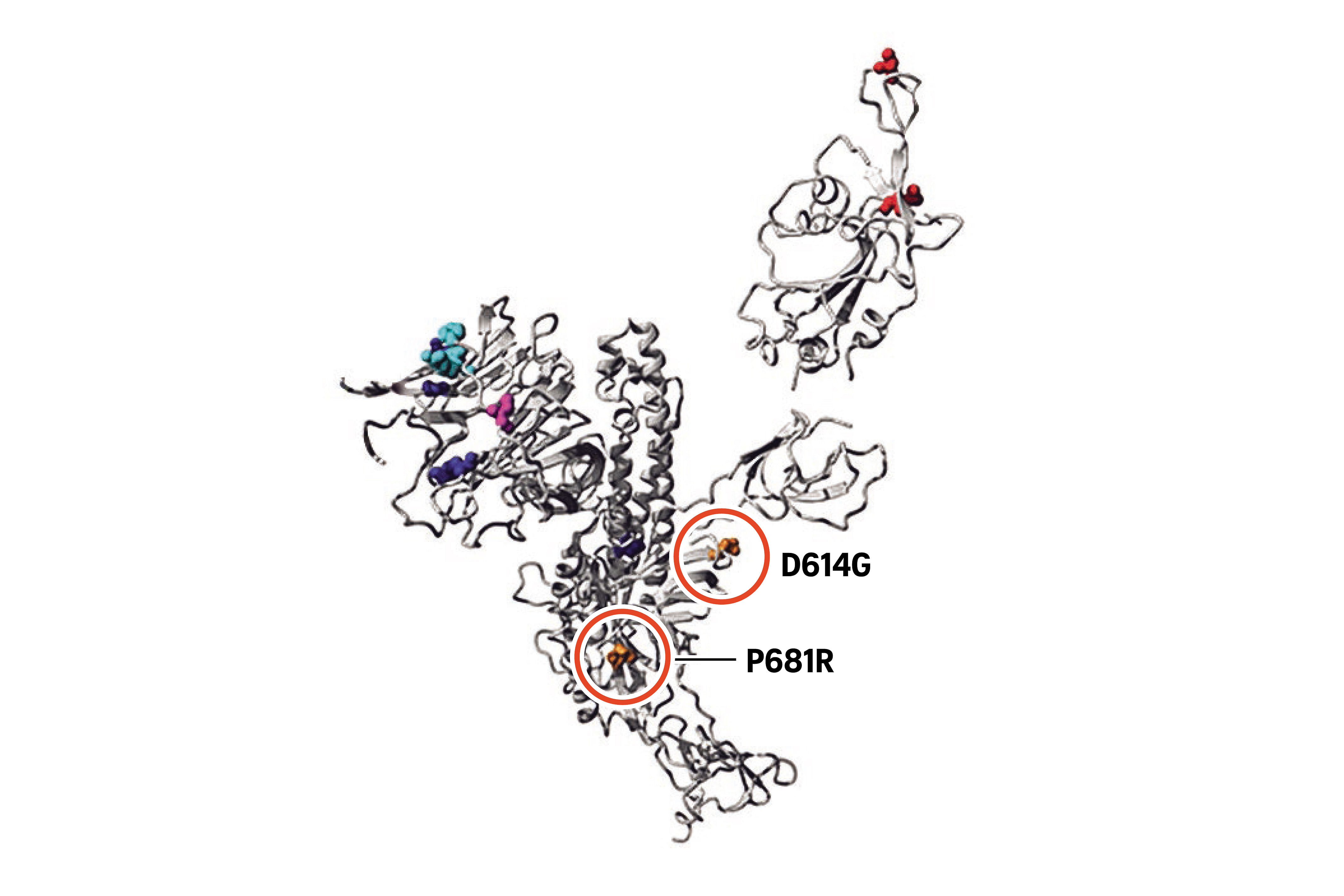SINGAPORE – The B1617 Covid-19 variant has infiltrated above 50 international locations, outcompeted other strains and proceeds to infect. It will also not be the last time the virus will mutate, professionals cautioned.
But what makes this strain, initially found out in India, so fantastic at spreading?
Dr Sebastian Maurer-Stroh, virus professional and executive director of the Bioinformatics Institute at the Agency for Science, Technological know-how and Analysis, factors out four capabilities that the B1617 pressure has in widespread with profitable virus strains.
He makes use of a single of the a few versions of the B1617 pressure- the 2nd B16172 edition – to display what would make this virus distinctive. B16172 has appeared to overtake B16171 in area cases as perfectly as those noted globally. The third variation, B16173, is exceptional.
First, a minimal primer on coronavirus biology. What you see in the diagram below is the spike protein of a coronavirus – the minor spikes that give the virus its distinctive shape.

The spike protein is a trimer – 3 subunits joined with each other. It is the elaborate shown in gray. The environmentally friendly and yellow complexes are two diverse antibodies that bind to the spike protein. The colored circles characterize the diverse mutations in B16172.
Now what tends to make the B16172 exclusive?
Characteristic 1: The virus’ mutations assist it to bind far more simply with the ACE2 receptor.
ACE2 is quick for angiotensin changing enzyme 2, which is a receptor protein in the host cell.
ACE2 receptors are found in several pieces of the body, such as respiratory airways, and are employed as entry details by the Sars-CoV-2 virus.

The Sars-CoV-2 virus will get inside of a host mobile via its area spike protein. The spike protein and the receptors have a unique 3D configuration that enables them to bind to each individual other. The virus attaches only to cells that have these receptors.
The spike protein attaches to an ACE2 receptor in the host mobile just before currently being activated by a different enzyme.
Now, let’s consider a closer search at 1 of the subunits on the spike protein to see how its mutations have aided.

Researchers think the L452R mutation and – to a lesser extent the T478K mutation – would make it easier for the virus to connect alone to the receptor and hence get inside the mobile.
If binding to the receptor is a lot easier, the virus can get inside the host cell a lot more quickly and infect extra cells.
But becoming additional infectious does not suggest it can make folks additional unwell.
A more transmissible strain most typically does not have more indicators or guide to a additional extreme type of the condition.
Characteristic 2: Decreasing binding to antibodies
T478K and specific other mutations – which are circled close to the yellow antibody – probably make the virus less possible to adhere to antibodies. In a total immune reaction, numerous kinds of antibodies perform jointly.

Though a minimize in antibody binding has nonetheless to be demonstrated for T478K, correlation was drawn primarily based on current facts. The E484K mutation found in the B1351 and P1 variants is located in the exact area as T478K – consequently it is probably that there will be a very similar outcome.
Even even though 1 mutation could a little reduce the security derived from vaccines and prior infections, it is inadequate to take out their utility.
Vaccination and all-natural immunity from prior bacterial infections are still really powerful in reducing the prospect of obtaining contaminated and spreading the disease, as very well as safety in opposition to a extreme sort of the condition – even in the case of variants.
Attribute 3: A extra secure spike protein

The D614G mutation has been extremely productive in improving spike protein balance and is found in basically all strains of the virus. D614G outcomes in the spike protein adopting a extra open up conformation, which presents it far more area location to interact with the ACE2 receptor, consequently expanding its infectivity.
A extra stable spike protein can also suggest extra spike protein expressed on the virus area, expanding its prospects of infecting host cells.
D614G has been linked to elevated transmissibility and a better viral load but not enhanced severity.
Attribute 4: Bettering cleavage charges
The spike protein demands to be cleaved into two models (identified as S1 and S2 models) to let structural variations required to enter into cells.

The diagram shows the spike protein on the Sars-CoV-2 virus in advance of cleavage and the right displays what it appears to be like like immediately after the S1 unit has dissociated.
Mutations like P681R could likely make improvements to cleavage prices and as a result raise infectivity. This has yet to be confirmed experimentally.
This write-up was initially posted in The Straits Situations. Permission necessary for replica.

“Esploratore. Appassionato di bacon. Social mediaholic. Introverso. Gamer. Studente esasperatamente umile.”
